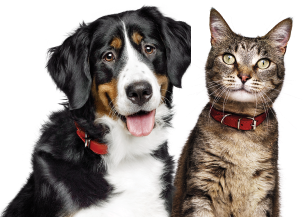The Australian Kelpie is renowned for its energetic and intelligent ways. Famously bred for herding sheep and cattle in Australia this dog breed loves to work. They can be affectionate family pets, although prefer to be running around with the family rather than laze around as a lap dog. They are good with young children and get along well with other active dog breeds. The Australian Kelpie is easily trained and loves continuous mental stimulation due to their naturally intelligent nature.
This dog breed is accustomed to Australian climates, however, while they are a predominantly outdoor breed it is best to acclimatize them to indoor social environments with activity in small spaces as well as outdoor open environments. Australian Kelpies can become obese if overfed and not exercised, they can also become anxious and erratic if their stimulation and energy needs are not met.
Australian Kelpies suit living environments with large accessible yards that they can expend their energy across the day, or in environments where they are exercised for 1-2 hours per day. They are naturally protective of their family unit and herds and will only bark to alert or as trained such as in herding requirements.
Grooming should be done weekly to the double coat maintenance.
Diet Suggestions:
Puppy: Hill’s Science Diet - Puppy Medium Breed Dry Dog Food
Adult: Hill’s Science Diet - Adult Medium Breed Dry Dog Food; Hill’s Science Diet - Adult Perfect Weight Medium Breed Dry Dog Food
Mature: Hill’s Science Diet Adult 6+ – Senior Medium Breed Dry Dog Food
Despite the name, the Australian Kelpie is not native to Australia. This dog breed was imported initially from Scotland in the late 1800’s. They were bred from a Scottish Smooth Collie or what is commonly known as a ‘Farm Collie’.
The ‘Australian’ asset to the collie name is believed to have originated from the intermixing of three pairs of working collies that were imported. The first female that was born from black and tan working collies on Mr. George Robertson’s ‘Worrock’ station on the Glenelg river in Victoria; eventually was purchased through an exchange of a horse from Mr. J.D. Gleeson. Mr. Gleeson gave her the name ‘Kelpie’.
They are often mistaken for having Dingo DNA; however, their true bloodline contains no native dingo DNA. The likelihood of this occurring across time is through the abandonment of farms by their farmers, of which often the dogs were left behind and became roaming, thus increasing the likelihood of interbreeding with other dog breeds which could possibly involve dingos.
Health Concerns:
The Kelpie is a relatively healthy dog breed, bred to be hardy. However, as with all dogs and breeds, there are a number of health concerns that you should look out for.
Obtaining veterinary records and DNA certificates for both father and mother prior to purchase will help you identify possible genetic issues upfront.
Potential health concerns include:
• Patella Luxation: where the dog's kneecap can dislocate out of its normal position.
• Hip dysplasia: a condition that alters the inner workings of the hip joint.
• Elbow dysplasia: a condition that affects the elbow joint and is caused by abnormal growth and development of the bones in the elbow, leading to joint instability.
• Cerebellar abiotrophy: a degenerative disease of the central nervous system.
• Progressive retinal atrophy (PRA): is a group of inherited eye disorders primarily causing degeneration and eventual loss of vision. This condition is characterised by the progressive deterioration of the retina which is the light-sensitive tissue located at the back of the eye.
It is advised that any prospective pet parents are aware of potential health challenges faced with this breed and that you do your own research before ownership.























